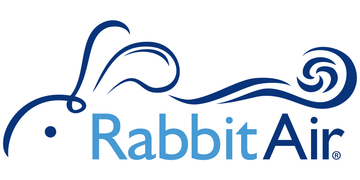
It’s no surprise that air purifiers are quickly climbing on the list of essential household appliances.
That’s even more evident in urban areas, where air quality is compromised by various pollutants.
And whether you own an air purifier, or are just considering getting one, a question arises—how long does it take to work?
Well, let’s unpack it.
Factors Influencing Air Purifier Efficiency
This is something that we tell our customers a lot: Even the highest-quality air purifier will not be as quick to work in every household equally.
There are several factors that determine how quickly an air purifier can clean the air in the room.
Let’s check them out.
Types of Pollutants
Different pollutants, different removal rates. Simple.
For instance, a particular matter (PM) is removed more efficiently than volatile organic compounds (VOCs). In fact, some studies indicate that HEPA filters—which are effective for capturing PMs—aren’t as effective for VOCs.
How to remove both effectively? Find a HEPA air purifier that also contains filters designed to remove VOCs-like toxins.
We’d recommend our special toxin-absorbing filter for our MinusA2 air purifier for customers who think they’re exposed to VOCs.
Room Size
The larger the room, the longer it will take for a purifier to be effective.
A huge space might need a lot of time for the purifier to circulate and filter the air effectively and—in some rare cases—one air purifier won’t be enough.
For an optimal result, we’d recommend to select a purifier rated for the specific room size.
If you’re unsure you can always contact us to make sure if one air purifier will be efficient.
Air Changes Per Hour
Air Changes Per Hour (ACPH) is a metric that indicates how many times an air purifier can filter the entire volume of air in a room per hour.
A higher ACPH means faster purification. For example, a unit with a 5 x ACPH can clean the air five times in one hour, leading to quicker improvements in air quality.
How to know which ACPH is optimal for you? You can use our Air Change Per Hour calculator, enter your household dimensions, and see how long it would take to clean the air.
Filter Type and Quality
The filter type heavily influences the effectiveness of air quality.
HEPA filters are always designed to capture at least 99.7% of particles as small as 0.3 microns—which makes them effective against dust, pollen, and smoke.
But as we said, not all filters are created equal. And not all filters capture all pollutants—such as VOCs—equally.
So make sure you research your air purifier thoroughly before you make a buying decision. And remember, it’s always better to ask!
How Long Does It Take For an Air Purifier to Work?
You should expect noticeable improvements in air quality within 30 minutes to 1 hour of turning on an air purifier. Especially in a radius around the appliance.
But if you don’t, don’t immediately assume it doesn’t work. Especially if you’re dealing with heavier pollutants.
Here’s a typical timeframe for different pollutant types:
-
Dust and pollen: Typically cleared within half an hour.
-
Some and odors: It might take up to an hour or longer, depending on concertation levels.
-
VOCs: These may require extended periods for significant reduction, especially due to their complex nature. Not to mention different filter requirements.
Important: The Environmental Protection Agency (EPA) has reported statistically significant improvements in respiratory health and allergy symptoms with consistent use of air purifiers.
This means that—while you should observe immediate results for indications of an effective air purifier—long term usage of an air purifier yields the best outcomes.

Best Practices for Quick Air Purification
It’s not only external factors that will impact your air purifier effectiveness.
Here are some ways you can impact how quickly it will do its thing, especially in the long run:
-
Placement: Position your unit in a central location, away from walls or obstructions to allow optimal airflow (wall-mounted units can fit snugly against the wall). Also, don’t place it near furniture that could block the airflow.
-
Regular maintenance: If you want your air purifier to work properly, you’ll need to take good care of it. We recommend regularly checking and replacing filters, as clogged filters can hinder performance—and reduce purification effectiveness.
-
Continuous use: Running the purifier continuously can help maintain improved air quality over time. Many experts recommend keeping it on throughout the day and night. If you can’t, at least keep it on during peak pollution hours.
No Patience Needed
Most users can expect their air purifiers to show results within the first half an hour.
But take note, as factors like room size, pollutant type, and filter quality will play a crucial role in determining overall efficiency.
You can also affect its quickness by placing the unit properly in the room, as well as maintaining it as per instructions.
Overall, it’s better to invest in a high-quality air purifier unit that can run all day and keep the air clean as it can significantly enhance indoor air quality and may benefit you in the long run.




